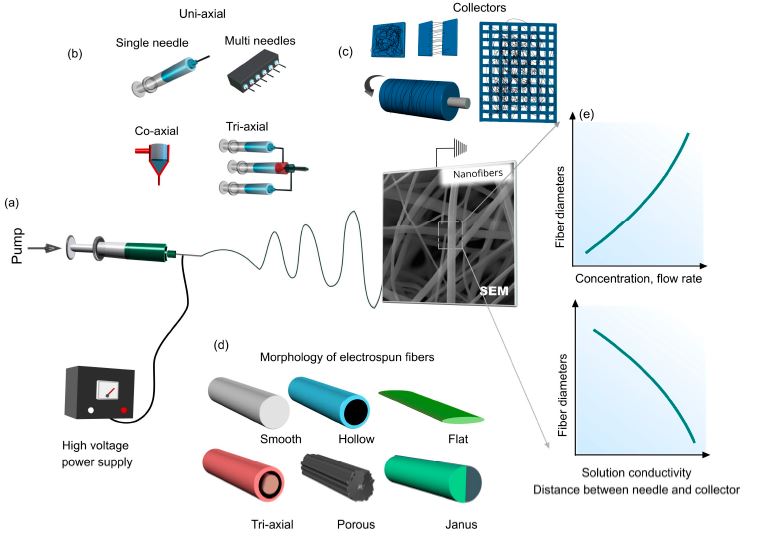Electrospinning of Cyclodextrin Functional Nanofibers for Drug Delivery Applications

Electrospun nanofibers have sparked tremendous attention in drug delivery since they can
offer high specific surface area, tailored release of drugs, controlled surface chemistry for preferred
protein adsorption, and tunable porosity. Several functional motifs were incorporated into electrospun
nanofibers to greatly expand their drug loading capacity or to provide the sustained release of the
embedded drug molecules.
In this regard, cyclodextrins (CyD) are considered as ideal drug carrier molecules as they are natural, edible, and biocompatible compounds with a truncated cone-shape with a relatively hydrophobic cavity interior for complexation with hydrophobic drugs and a hydrophilic exterior to increase the water-solubility of drugs. Further, the formation of CyD-drug inclusion complexes can protect drug molecules from physiological degradation, or elimination and thus increases the stability and bioavailability of drugs, of which the release takes place with time, accompanied by fiber degradation.
In this review, we summarize studies related to CyD-functional electrospun nanofibers for drug delivery applications. The review begins with an introductory description of electrospinning; the structure, properties, and toxicology of CyD; and CyD-drug complexation. Thereafter, the release of various drug molecules from CyD-functional electrospun nanofibers is provided in subsequent sections. The review concludes with a summary and outlook on material strategies. Do you want to read the full article?

